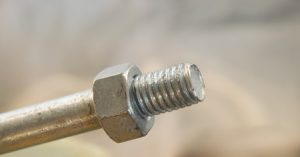
Okay, this might get confusing for some people, but it’s meant to bring clarity about threads… There are right hand threads and reverse threads. Is there a difference? Yes.
Right Hand Threads
The most common direction for threaded products is “right hand threads.” This direction slants up and to the right, moving away from you when turned clockwise. To tighten them, screw them to the right. To loosen them, screw them to the left. “Righty tighty, lefty loosey” is a phrase you can remember in order to screw right hand threads in the direction you want. Screwing to the right makes them tighter, and screwing them to the left loosens them up.
Left Hand (Reverse) Threads
Though right hand threads dominate most applications, some threaded products are reverse threads. This means they are “left hand threads.” These reverse threads, which are fairly rare since most people are right handed, run counterclockwise. Some applications need left handed fasteners, so reverse threaded products do exist. Basically, left hand threads are used when the application of pressure could force a right handed fastener to come loose.
Where are left hand threads commonly used? In the automotive industry, some tire bolts are reverse threaded. This keeps torque from loosening them. When it comes to heating and cooling systems, you might find both right and left handed threads– this is because having both provides more defense against leakage. And, in the world of safety, gas-supply valves can use left handed threads in order to differentiate them from oxygen-control valves.
Dependable ACME Threaded Products of Westbury, New York, is a company known for supplying quality ACME screws, nuts and rods to many satisfied customers throughout the years. With more than 60 years of experience in the industry, Dependable ACME can deliver the threaded products you need, whether right hand or reverse. Please call 800-893-3792 or email depacme@aol.com for more information.

